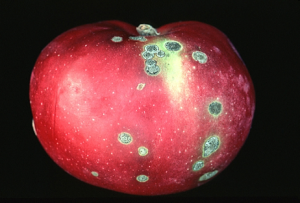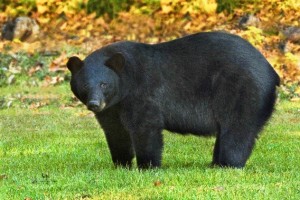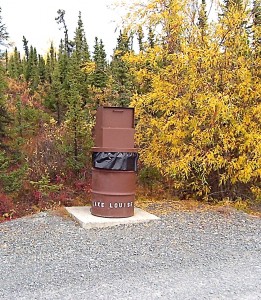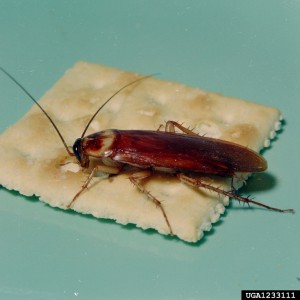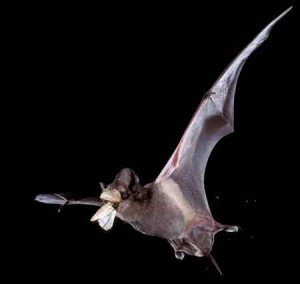Growers manage pests to produce great apples
By Marcia Anderson
Working in the Office of Pesticide Programs, I was excited to learn of the progress New England fruit growers were making in using “integrated pest management” to reduce pests and pesticides in their orchards.
As we go about picking and eating our apples, many of us are not aware how much New England apple growers must battle pest problems on a continual basis. Pests like moths, mites, and fungi see an apple orchard as a place to eat or reproduce. In general, they have found that integrated pest management – an environmentally friendly, common sense way of controlling pests that involves a variety of approaches – is the way to go. Because the ecology in every orchard is different, pest conditions and circumstances are different for every grower and thus solutions may vary.
Integrated Pest Management has become increasingly engrained in apple pest management in this area over the past 30 years. Most New England growers live right on their farms and have found the most effective way to control pests is by using scientifically-based IPM practices that help their orchards in the long-term.
Growers monitor their orchards weekly from early spring through the growing season to determine pest pressures. Growers and crop consultants become intimate with their location, learn about past disease and pest pressures and about the ecology of their orchards. And they learn something new every year.
Farmers who use integrated pest management can reduce their two highest bills: for pesticides and fertilizers and for fuel.
Maintenance and sanitation are key parts of preventing pests in apple orchards.
Farmers have learned it helps to keep the land and water as clean as possible. In the fall, growers clean the orchard floor, cutting suckers off tree trunks, and clearing weeds from under the trees. Fallen leaves, grass clippings, and winter prunings are mulched and returned to the soil. Leaves chopped small will decompose more quickly and neither the pests nor diseases will have anywhere to overwinter, reducing the pest populations in the orchard the next spring. The only thing removed are the apples.
Simply maintaining this level of sanitation successfully reduces the presence of apple scab, one of the most persistent pest problems in orchards. Apple scab comes from a fungal spore that overwinters on the ground. It normally requires a fungicide, or anti-fungal pesticide, to stop its development. Those spores make leathery-brown scabs that blemish the fruit and reduce its perceived quality and this its economic value.
Apple scab also damages trees by creating lesions on leaves that spread and interfere with photosynthesis. A bad scab infection can shut down a whole tree and spread quickly throughout the orchard.
Other pest prevention methods include planting pest-resistant varieties and replenishing nutrients. Apple trees need specific nutrients to produce quality fruit. When hundreds of bushels of apples per acre are removed annually, nutrients are removed from the soil. Soil should be monitored and nutrients added when necessary.
So why should we care about pest prevention and the appropriate use of pesticides on our apples? One reason is that apples are prevalent in the diets of our children. And they’re good for us! Using the scientifically-based best practices of integrated pest management, northeastern apple growers can give us high quality apples at reasonable prices.
More information from EPA on Integrated Pest Management: https://www.epa.gov/managing-pests-schools/introduction-integrated-pest-management
You can see New England growers discuss using IPM to prevent pests in series of three videos by the New England Apple Association.

